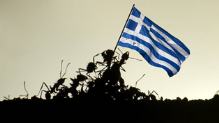Temnothorax interruptus
From Collingwood (1979) [1]
This species characteristically nests in small single queened colonies under stones and in rock crevices. In Scandinavia it is restricted to warm lowland habitats. The aiatae are found in July and August.
References
- , The Formicidae (Hymenoptera) of Fennoscandia and Denmark, vol. 8. Klampenborg, Denmark: Scandinavian Science Press Ltd., 1979, p. 156.
From Collingwood (1979) [1]
Workers. Colour varies from entirely pale yellowish brown with the head pale to almost black and the dorsum of the gaster brownish. The antennal clubs are brown to brownish black contrasting with the rest of the funiculus. The head and clypeus are longitudinally striate and the alitrunk rugose. The petiole node has a distinct but short truncate dorsal area; propodeal spines are very short but quite distinct. Length: 2.3-3.4 mm.
Queen. Brown to brownish black with scutellum striate throughout, rest as worker. Length: 3.7-4.5 mm.
Male. Brownish black; appendages very pale; antenna) scape as long as 4 following segments. Space between notauli rugulose. Length: 2.5-3.2 mm.
References
- , The Formicidae (Hymenoptera) of Fennoscandia and Denmark, vol. 8. Klampenborg, Denmark: Scandinavian Science Press Ltd., 1979, p. 156.
